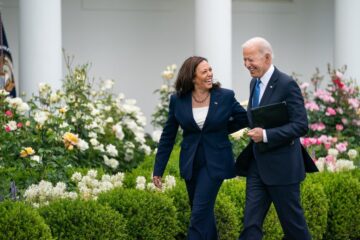Welcome back to Week 41 in my weekly reports analyzing the Covid-19 pandemic and its effects on the country and higher education in a new Biden-Harris administration. For those of you reading this on my blog, Off the Silk Road, I have also launched a newsletter, where these reports can be sent directly to your email each week. Click here to subscribe.
Last week, we focused on the presidential transition and the stagnant vaccine rollout, as well as examined the latest Covid-19 outbreak in Congress. This week, we will discuss how President Biden intends to confront the crisis and unpack the most recent news about variants and vaccines.
A national look
The U.S. passed a number of milestones this week: a year after a Washington man became the first diagnosed case of Covid-19, the country passed 400,000 lives lost this week to the virus. On the eve of their inauguration, now-President Biden and Vice President Harris chose to honor and grieve the lives we have lost with a moving memorial in Washington, DC. A year later, we know so much more about this virus, however we have still largely failed to contain it. It also marks one year since the lockdown in Wuhan in response to the outbreak. I was in China during this time and witnessed the beginnings of the crisis first-hand before having to leave the country. For a detailed summary, see this Twitter thread.
As former president Trump retreated to the golf course, his non-existent national plan disappearing with him and the American carnage he pledged to stop forever in his legacy, the effects of the January 6 insurrection on the Capitol can still be felt. 38 Capitol Police officers and around 150 National Guard troops have tested positive from Covid-19, remnants of the superspreader event on that day. Although it is possible that we avoided the worst of a “surge on top of a surge” initially expected during the holiday season, President Biden took his oath of office on the day of a record number of Covid-19 deaths — 4,409, according to the COVID Tracking Project. The CDC’s forecast predicts 508,000 deaths by February 13. While cases and hospitalizations are currently trending downward, deaths are currently still at a dangerously high level and data from other countries, such as Denmark, show the potential ramifications of the B.1.1.7 variant spreading in the U.S. Scripps Research Translational Institute’s Dr. Eric Topol summarizes the three variants we are watching in a table here.

On his first full day of office, President Biden released a 200-page plan to address the pandemic. (He subsequently issued a different plan to address the economic crisis.) What has struck many is how simple Biden’s plan is — if a similar framework had been introduced under the previous president’s watch, hundreds of thousands of lives could have been saved. The Biden-Harris plan has seven key components:
- Restore trust with the American people
- Mount a safe, effective, and comprehensive vaccination campaign
- Mitigate spread through expanding masking, testing, treatment, data, workforce and clear public health standards
- Immediately expand emergency relief and exercise the Defense Production Act
- Safely reopen schools, businesses and travel, while protecting workers
- Protect those most at risk and advance equity, including across racial, ethnic and rural/urban lines
- Restore U.S. leadership globally and build better preparedness for future threats
While it will take some time to fully harness the power of the federal government to achieve these goals, President Biden has signed a series of executive orders all designed to boost production of key supplies and continue to save lives as the vaccine is rolled out. Additionally, President Biden has already shown his commitment to science by positioning top medical experts to communicate with the American people, including new CDC director Dr. Rochelle Walensky. “You can get up here and talk about what you know, what the science is, and know that’s it. Let the science speak,” Dr. Anthony Fauci said at his first White House press briefing. “It is somewhat of a liberating feeling.” Science is back.
Fauci moods: Biden briefings vs. Trump briefings pic.twitter.com/rNS6sIu9ZF
— The Recount (@therecount) January 21, 2021
Let’s take a look at some of the latest scientific developments:
- A new, very large household transmission study published in The Lancet found that individuals aged 60 and above, as well as infants, are most likely to get infected, but those under 20 are 1.6 times more likely to infect others.
- A systematic review published in the Annals of Internal Medicine estimated that at least one-third of Covid-19 cases are completely asymptomatic.
- According to a new report from the CDC, the Abbott BinaxNOW antigen test has a sensitivity of 92.6% in symptomatic people and 78.6% in asymptomatic people when it comes to culturable virus. This shows its feasibility as a rapid, frequent screening tool.
- There is growing concern about “immune escape” in the variant first discovered in South Africa, which may mean it evades the protection acquired from some vaccines. These studies have not yet been peer-reviewed and the findings result from laboratory experiments with blood samples from groups of patients, not observations of the virus spreading in the real world, but further research is needed.
- A study published in the Lancet found that a 10% increase in self-reported mask use in a community was associated with > 3 fold better odds of Rt below 1.
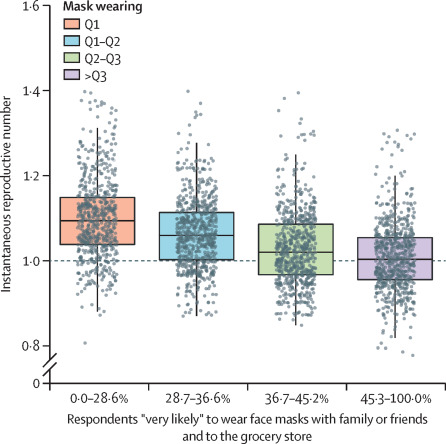
- According to STAT, drugmaker Eli Lilly stated in a press release that its monoclonal antibody prevented Covid-19 infections in nursing home residents and staff in a clinical trial. This is the first time such a treatment has been shown to prevent infection.
- Sales of cold, flu and cough medicine in the U.S. plummeted 46% in the five weeks ending December 26 from the same period a year prior, while flu numbers are at near-record lows.
- A report in JAMA shows that those treated in the ICU during periods of peak Covid-19 ICU demand had a nearly 2-fold increased risk of mortality compared with those treated during periods of low demand. This shows the importance of not straining medical systems, as it will lead to increased mortality.
- There is more discussion about the benefits of double masking, as Germany mandates medical-grade masks in public spaces.
- Similarly, a CDC report shows a correlation between case loads and the ability for health departments to effectively locate and quarantine contacts. The more cases an area has, the harder it is to conduct contact tracing.
- According to a preprint published in MedRxiv, occupations such as construction laborers, agricultural workers and chefs were associated with a greater risk of death from Covid-19 in California.
- A report published in JAMA found a decrease in reported adherence to nonpharmaceutical interventions (mask-wearing, social distancing, etc.) between April and November across the country. This shows the need for a strategic approach to combat pandemic fatigue.
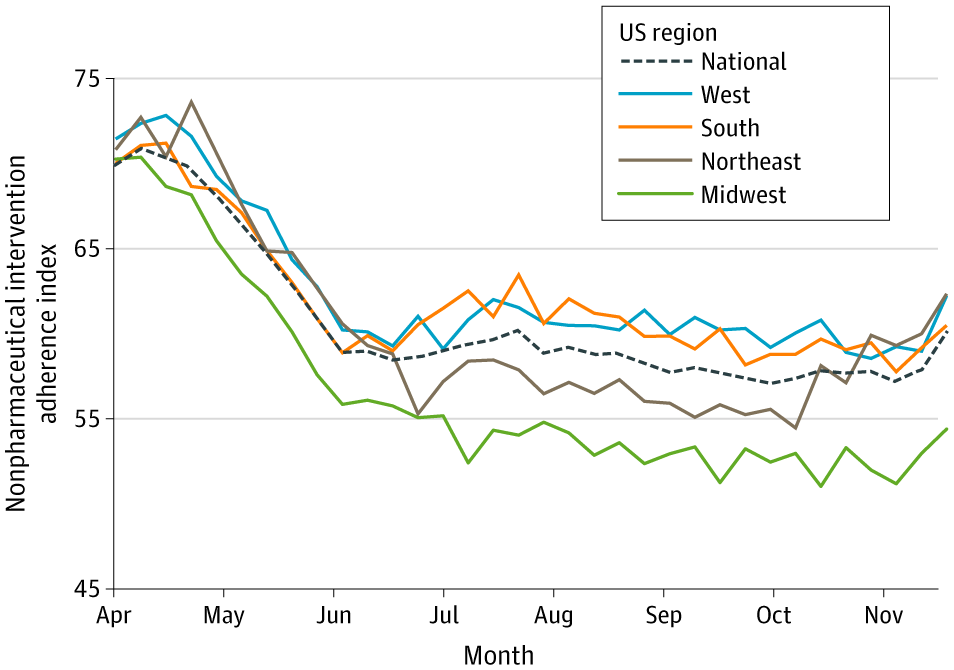
Some sources have said that Biden is inheriting absolutely no prior vaccine plan and must start from scratch. Whether or not this is true, we still currently do not know exactly how many vaccines are being supplied to states each week and how many are being produced. Yesterday, the U.S.’ 7-day average of daily vaccine administrations surpassed 1 million, according to CDC data. President Biden has set a goal of 100 million vaccines in his first 100 days. We have set up a new tab on the Vaccine Allocation Dashboard to track the administration’s progress.
While this is a good start, we will indeed meet this goal at our current pace and must administer around 2 million vaccines per day to get a majority of the population vaccinated by the end of the summer. As the Johnson & Johnson vaccine may receive emergency authorization in the coming weeks, it is safe to assume that supply will increase in the future (mostly after April) and our current problems lie within vaccine administration. A New York Times model shows that the U.S. could double its vaccination rate to 2 million per day and the daily pace of vaccinations would never meet distribution capacity.
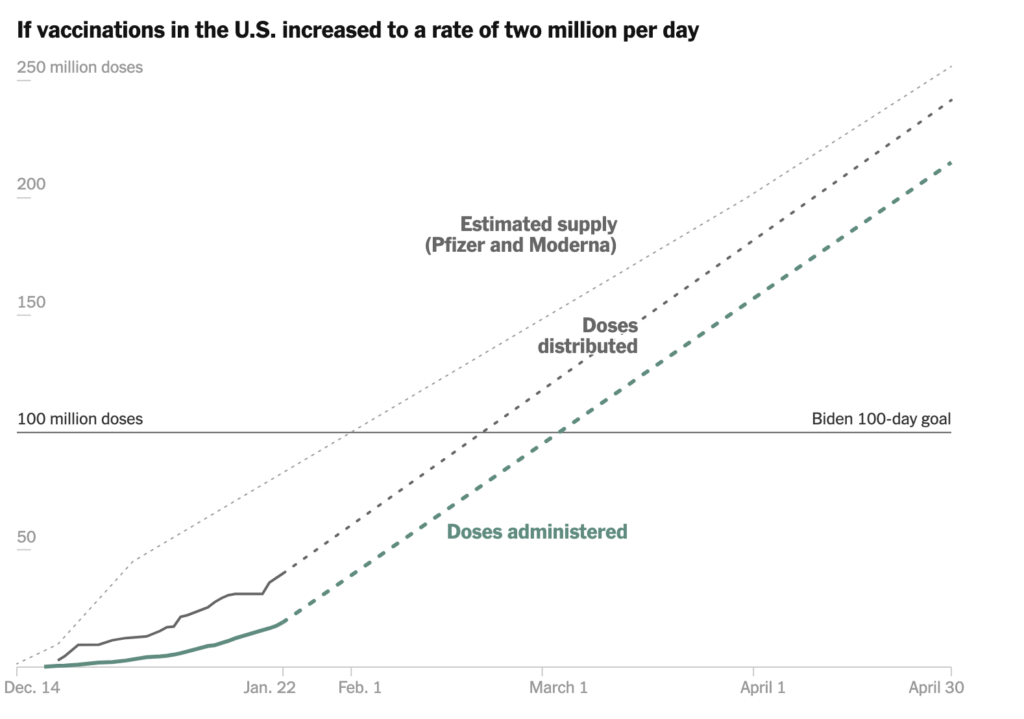
Many states have had to cancel appointments this week due to a shortage of vaccines. According to the data I have been analyzing, most states have come nowhere close to using all the shots that have been distributed, indicating that the data may be inaccurate or there is a larger unknown problem. Hopefully by next week, we will have a better estimate of where the bottlenecks in the process are and how the data pipelines are affected.
A few other updates on vaccines:
- The CDC has quietly changed its recommendations for coronavirus vaccines to allow patients to switch the vaccine manufacturer (i.e. Pfizer and Moderna) between the first and second doses in “exceptional situations,” as well as allowing second doses to be administered as much as six weeks after the first.
- I published my vaccination plan (initially in a Twitter thread) in Elemental, Medium’s science and wellness blog. My plan uses geography to strategically place vaccination sites and ensure equity.
- Shortly after taking office, President Biden has begun to harness the power of FEMA to construct 100 mass vaccination sites in the coming weeks.
- A study published in the American Journal of Preventive Medicine found that waiting for a vaccine with higher efficacy would cause additional hospitalizations and deaths. This solidifies the belief that if it is your turn to take the vaccine, you should absolutely take it and not wait for another vaccine to be granted authorization.
- Harvard Medical School professor Dr. Rebecca Weintraub illustrates the patchwork of vaccine data availability and how vaccine demographic data is only published in a handful of states.
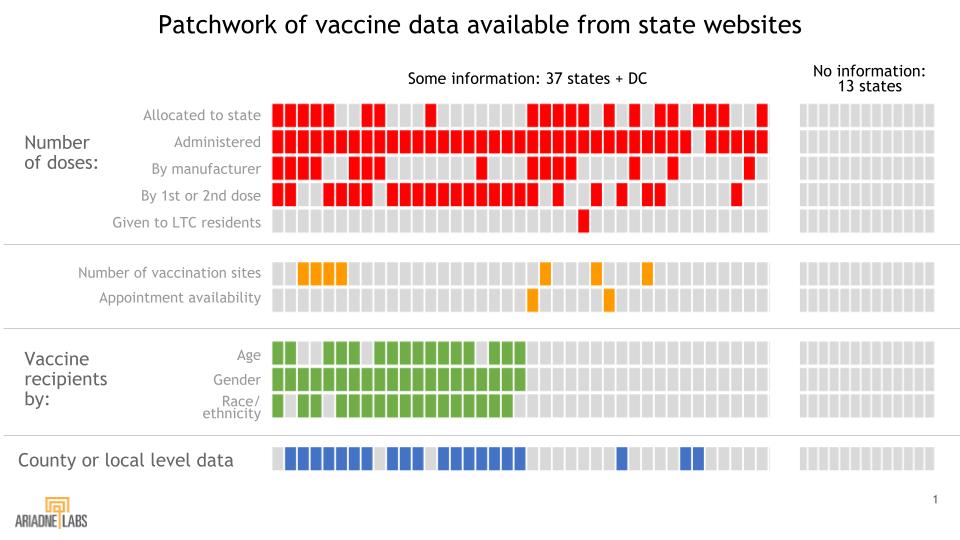
- The Tokyo Olympics this summer could hinge on vaccine availability for athletes and may not even take place at all.
- As ProPublica reports, there is currently no mechanism in place for states to record the number of doses wasted, leaving us completely in the dark.
- CNN’s Kerry Flynn reports on the critical role local news reporters have played in helping their constituents sign up for vaccines, which as director of the Dartmouth Center for Global Health Equity Anne Sosin notes, depends heavily on communities’ access to the internet.
- A new modeling study shows that for any vaccine supply between 0% and 50%, prioritizing adults over 60 best reduces mortality. There is a slight positive effect achieved by prioritizing individuals who have not been previously infected.
- Preliminary data from Israel may point to early efficacy of a vaccine on case counts only a few weeks after vaccination, assuming a sizable portion of the population is vaccinated.
- As one New York Times writer explains, the “vaccinated class” may emerge in the coming months with some of the population vaccinated and others still waiting.
- According to a CDC report, 10 cases of anaphylaxis were reported after over 4 million doses of the Moderna vaccine were administered. The incidence rate is 2.5 cases per million doses administered.
- A new study to be released on Monday shows that with wealthy nations fully vaccinated by the middle of this year and poor countries largely shut out (an extreme scenario) the global economy would suffer losses exceeding $9 trillion, a sum greater than the annual output of Japan and Germany combined.
- A Kaiser Family Foundation poll shows the chaotic nature of the vaccine rollout: most older adults do not know where they can sign up to receive a vaccine, while only 8% of adults say the federal government is doing an “excellent” job of distributing Covid-19 vaccines to the states.
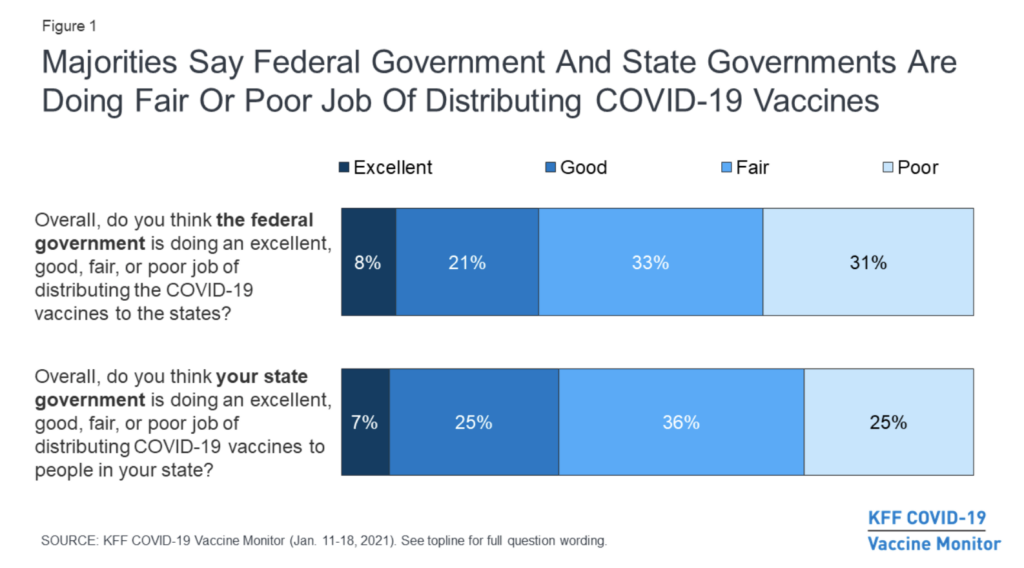
Let’s move on to our discussion of higher education.
Higher education
Here’s a roundup of this week’s higher ed news:
- President Biden has signed a new executive order that will support college reopenings. It includes a pledge to develop clear guidance, ensure equitable distribution of testing and focus on socioeconomic disparities.
- The College Board has announced that it will suspend administration of the SAT Essay and the SAT Subject Tests, citing the pandemic.
- “New semester, same irresponsibility,” editors at the University of North Carolina’s Daily Tar Heel write as the university strives to stay open this semester.
- Thousands of students at Arizona State University have left dorms for the spring semester, some due to concerns about few in-person opportunities and loneliness. One student suffered an atrial fibrillation heart attack from Covid-19 complications this past fall. “The University is not only ignoring the community’s health, it’s also bypassing the concerns demonstrated by many people in the area,” one student writes. In addition to providing testing for ASU and surrounding communities, the University should take the initiative to prevent the spread of the disease instead of only mitigating it.”
- Some schools, such as the University of Washington and Harvey Mudd College, have announced continuations of remote instruction for the spring. Others, such as Union College, have already begun campus quarantines in response to outbreaks.
- Within days of moving in, first-year students at the University of Pennsylvania are reportedly partying in college houses and breaking the university’s Covid-19 guidelines.
- After a wave of cases of the B.1.1.7 variant among the University of Michigan’s athletic teams, the state health department has ordered the suspension of practices for two weeks.
- Baylor University has started Covid-19 testing on a weekly basis for every student, faculty and staff member, with students being locked out of campus Wi-Fi if they fail to show up for testing.
- In the coming weeks, universities will need to make decisions about graduation. Brown University has announced that its May Commencement will occur in-person, but without family or guests. I expect many colleges to do the same.
- Despite the pandemic, applications for the Class of 2025 at Harvard and Brown are at record highs.
The Good Stuff
Let’s roll the clips of the good stuff. In my usual tradition, I feature my favorite stories from the week. Here are my Top 10.
- Bernie Sanders’ mittens at the inauguration drew widespread attention on the internet. They are, in fact, knitted by Jen Ellis, an elementary school teacher in Vermont.
- Brayden Harrington, a 13-year-old boy with a stutter who formed a special bond with President Biden, has announced plans to write his story in a picture book.
- In what is currently the greatest political scandal of the Biden era, the president’s new Peloton may present security issues at the White House.
- CNN fact-checker Daniel Dale reflects on four years of highlighting falsehoods in the Trump era.
- A National Guard member continued teaching his music students from the back of a Humvee during his 12-hour shift at the Capitol.
- The country’s top female reporters describe the past four years covering Trump.
- The New York Times highlights the most notable banner headlines of the Trump era.
- Alvin the Beagle was key to Senator Raphael Warnock’s electoral success.
- Rapper Dessa Darling created her own remix of a song from “Hamilton” in honor of Treasury Secretary nominee Janet Yellen.
- The Washington Post went behind the scenes of the inauguration fireworks show, and discovered why Tom Hanks was so cold.
Conclusion
Science has been restored at the White House with the Biden-Harris administration’s national strategy. Additionally, the U.S. has returned as a critical player in the global public health sphere, with President Biden rejoining the World Health Organization and opting in to COVAX, a global effort to ensure equitable distribution of vaccines. However, the new administration inherits a grim national picture, with tens of thousands more Americans projected to die in the coming months. Dr. Ashish Jha, Dean of the Brown University School of Public Health, sums up the current situation like this: “We have a window here / Things are getting better / Gains are very very fragile / There is zero justification for states not vaccinating around the clock / We are in a race against the variant(s).” Vaccines will be the name of the game in order to save lives, but as Georgetown’s Dr. Angela Rasmussen points out, it is also necessary to slow down transmission to help achieve herd immunity with minimal loss of life.
Editor’s note: If you are interested in problem-solving and learning key tools for recovery and pandemic resilience, consider signing up for Brown’s Dr. Megan Ranney and Dr. Ashish Jha’s new course, “Pandemic Problem-Solving: Surviving and Thriving in the Age of Pandemics.” They are two of the world’s foremost Covid-19 experts and have developed an amazing course for further exploration.
I’d like to thank all the student journalists with whom I have the pleasure of working. In the next weeks and months ahead, they will become vital in chronicling their colleges’ paths forward for the spring and beyond. Support their work by reading it.
My best to all for good health.
Like what you see? Don’t like what you see? Want to see more of something? Want to see less of something? Let me know in the comments. And don’t forget to subscribe to the weekly newsletter!
For more instant updates, follow me on Twitter @bhrenton.

